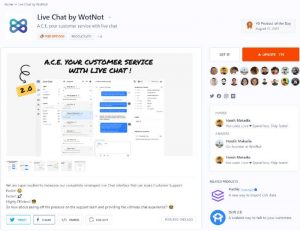
A strong middle class is critical to economic success. It’s what set America apart back in the day. It’s what led to a robust infrastructure, educational system, entrepreneurism, thriving industry and consumer spending. Rampant income inequality, on the other hand, sparked the Great Recession. Credit Suisse just released its annual global wealth report, and it seems to signal peril for the middle class. According to the latest Social Security Administration figures, more than half of all U.S. workers (51 percent) earn less than $ 30,000 a year. Young people today — those with the technological skills employers desperately need to remain competitive and innovative — are also feeling the sting of the global economic crisis. In fact, they’re four-times more likely to be unemployed. A third of them aren’t even participating in the job market, as indicated by research from the Solutions for Youth Employment Coalition.
Since 2008, wealth growth has not allowed middle-class numbers to keep pace with population growth in the developing world. Of course, the other complicating factor involves the cost of labor. As the global barriers to business dissolve and qualified talent abroad take on work at lower rates, the impacts have bruised U.S. workers.
True, unemployment has fallen to healthy levels, hiring is climbing in some sectors and optimistic labor analysts predict a robust employment scenario soon. Yet, wage growth has not only flattened, it’s become non-existent. All of these factors have essentially sown the seeds from which the gig economy has flourished. There’s an interesting alignment taking shape: industry wants to run leaner and cheaper; talent want greater control, flexibility, and freedom; and more professionals are taking freelance positions to round out their stagnating incomes. In many ways, contingent work is helping capable talent reclaim their livelihoods and financial strength. Unfortunately, some employers are still trying to squeeze MSPs and their staffing partners for unreasonably thin margins. Even in a more on-demand economy, hiring managers and HR leaders should never forget that they still get what they pay for.
Why bill rate increases could occur
Concerns about the lack of wage growth have put increased pressure on states to consider wage increases. The Department of Labor has been advocating for proposed hikes of up to $ 10.10 per hour. Several states have followed suit and driven their minimum wages far above the $ 7.25 federal mandate: Alaska, Arizona, California, Colorado, Connecticut, Delaware, Florida, Illinois, Hawaii, Massachusetts, Maine, Maryland, Michigan, Minnesota, Missouri, Montana, New Jersey, New Mexico, New York, Nevada, Ohio, Oregon, Rhode Island, Vermont, West Virginia, Washington and Washington, D.C.
In other cities and states, workers must also receive paid leave: California; Connecticut (sick leave); Massachusetts (sick leave); Minnesota (FMLA); District of Columbia; Jersey City, NJ; New York City; Philadelphia;, Portland, OR; Seattle; and San Francisco.
So what does this mean? That bill rates are likely to rise a bit. And that shouldn’t be a frightening Halloween tale to savvy clients. Healthy margins ensure that MSPs are attracting the best staffing partners who, in turn, entice the brightest and most productive people — and retain them for the life of the program.
While the majority of employers cite quality as their top criterion for bringing aboard new talent, especially as skills shortages and steady economic growth have led to fierce competition for high-caliber performers (78 percent, according to a July 2015 survey by Staffing Industry Analysts), the fact remains that clients promote a blended workforce primarily to cut costs. And that’s precisely where they can unwittingly compromise their push for quality.
Understanding bill rates: the fundamental elements of markups
Without really evaluating these built-in cost elements, clients often fall prey to the trap of choosing suppliers with impossibly thin margins. Pitfalls of such decisions include dreadful supplier engagement levels, unsustainable operating costs that lead to attrition, and disastrous obstacles in attracting exceptional talent.
Clients should realize that they’re compensating MSPs and staffing suppliers for more than a candidate’s pay rate; they are paying for a great deal of work.
- The expenditures of time and effort from the staffing partner’s internal recruiters and supporting resources
- The type of workers being sought, particularly for niche positions
- The competition for top talent in a certain regional or industrial market
- Local standards, cost of living considerations and average salaries
- The additional time to recruit specialized skills when a scarcity of qualified talent exists
- The geographic challenges associated with certain sites (e.g., locating highly experienced talent in rural markets with small, dispersed populations)
- The depth of screening required for compliance with the client’s policies or regulations
- The overall supplier sourcing, compliance assurance, reporting and program management tasks overseen by MSP teams
MSPs can help their clients recognize the costs that suppliers must incorporate into their bill rates to generate competitive, sustainable and reasonable margins.
- Recruiting: Sourcing, engaging, and recruiting talent are significant undertakings. Because social networking plays a prominent role, recruiters must spend more time interfacing and communicating with prospects to keep their interest. In addition, the process of attracting, locating and marketing to candidates encompasses costs associated with advertising through multiple media, background, and drug screenings, required skills or behavioral testing, merit profiling, reference checking, employment verification, job board subscriptions and more. To ensure a continuous pool of fresh talent, staffing suppliers must also proactively recruit passive candidates to build virtual benches that can meet short-notice requests, seasonal demands or hiring spikes.
- Uncle Sam’s share: No supplier can escape government-imposed regulations and tax withholdings as the employers of record for the talent to be placed. These statutory obligations include FUTA, FICA, SUTA, workers compensation insurance and other benefits, such as Affordable Care Act (ACA) mandates, required by the government in relation to federal, state and local taxes.
- Worker support: Contingent talent are legally the employees of their staffing providers. As direct employers, staffing suppliers bear the brunt of standard administrative costs associated with worker care, payrolling, on-/off-boarding, health benefits, 401Ks, and any other ancillary incentives in place to attract and retain the best workers available.
- Overhead: Hiring managers think of staffing suppliers as exceptional recruiters who find and place indirect talent. Staffing firms are, however, brick-and-mortar companies with the same operating costs as their clients. When explaining bill rate components to hiring managers, MSPs should note that overhead expenses are inescapable realities for their staffing partners. That means accounting fees, advertising, insurance, interest, legal fees, labor burden, rent, repairs, supplies, taxes, telephone bills, travel expenditures, and utilities.
- Profit: No business exists to satisfy purely altruistic aims, and no business wants to operate in the red or just within the black. Profits drive growth, performance, innovation, and longevity. Suppliers need to realize healthy bottom lines to continue conducting business. And in many cases, the percentage of profit calculated into the markup is much lower than the other elements.
How MSPs can help clients balance quality with cost savings
Enforcing bill rate transparency, establishing rate card controls and explaining the composition of markups will go a long way in justifying nominally higher costs to clients. It could also help persuade them to see how the lowest possible rates could lead to even lower quality standards, which ultimately cost companies more in the long run. Regular data collection, analysis, auditing, and reporting can help determine what rates are truly competitive for the best talent.
- Evaluating bill rates for each assignment helps MSPs calculate supplier averages by position and location. By observing bill rates that reach the threshold or fall below, in comparison with candidate skills and availability, MSPs can better guide hiring managers in lowering rates or raising them when qualified talent seem scarce.
- Developing regional or location-specific rate cards make it easier for clients to gauge and react to fluctuations in market conditions, by job category and geography. For example, a low bill rate may prevent stellar software engineers from taking positions in cost prohibitive cities such as New York, Boston or San Francisco.
- Utilize established service-level agreements and key performance indicators to measure talent quality in context of their pay rates, markups, skills, geographies, and other factors. This audit will help identify the highest performing suppliers, with the best results, at the most competitive rates.
- Consider issuing recurring hiring manager satisfaction surveys throughout the assignment, as another criteria. You may discover that high engagement and satisfaction scores positively influence a hiring manager’s perception of the cost-benefits analysis for suppliers and the workers they’re supplying.
Regardless of bill rates, markups, not-to-exceed caps and other cost controls, contingent talent remain more economical than their full-time counterparts. A complementary workforce undeniably allows companies to avoid certain costs, such as health insurance, workers’ compensation, paid sick leave and other benefits. The flexibility inherent in an elastic, blended workforce also reduces soft costs. Hiring managers can ramp up or scale down talent pools on demand, with greater ease and less risk. For today’s rapid, unpredictable and sometimes sudden market shifts, this level of scalability and fluidity provides incredible value.
The reality is that markups are seldom predicated on greed. The costs of doing superlative business, and developing exceptional talent pools, are the true drivers of markups — not a quest for financial gain alone.
Business & Finance Articles on Business 2 Community
(90)







